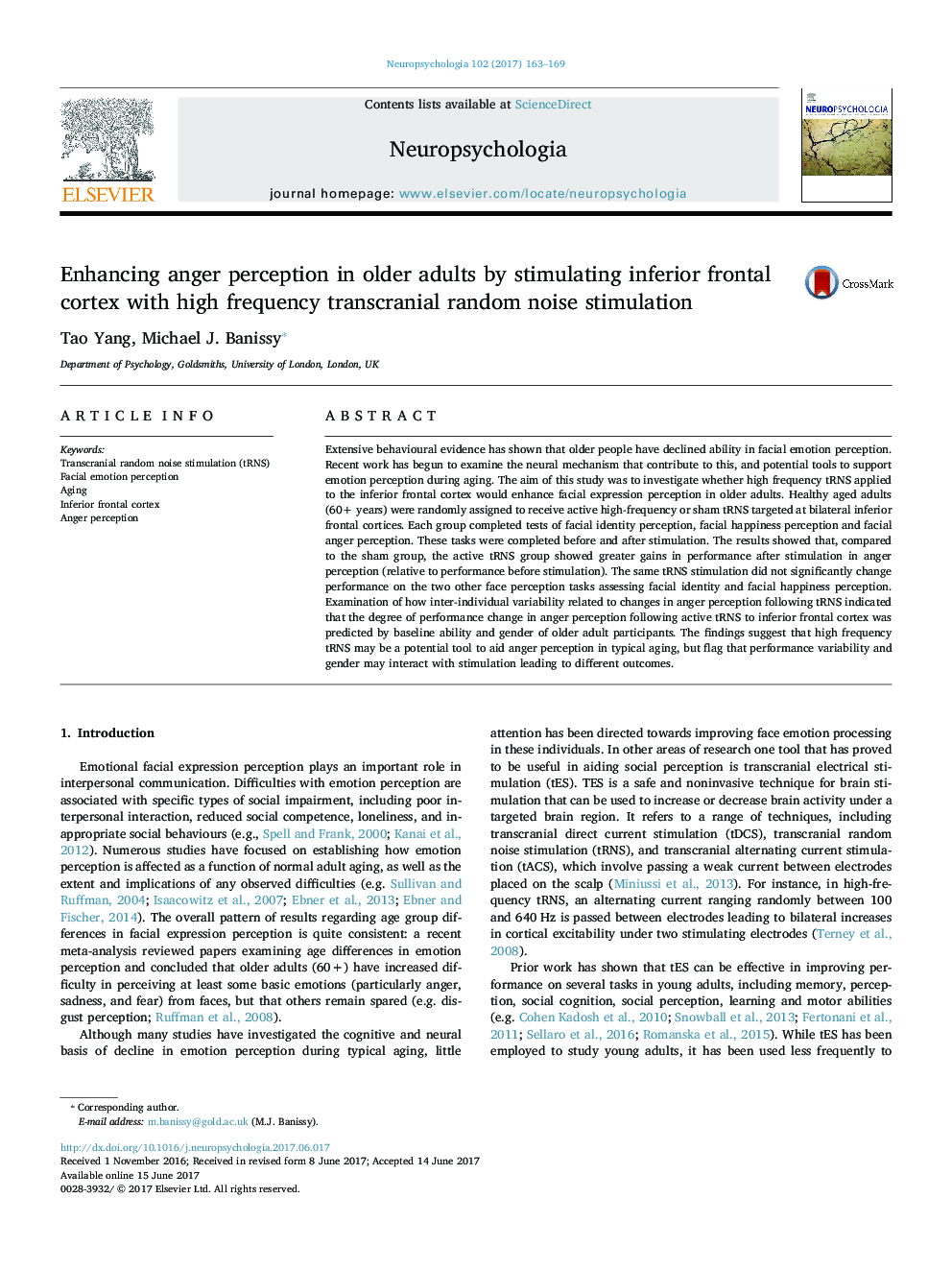| Article ID | Journal | Published Year | Pages | File Type |
|---|---|---|---|---|
| 5045147 | Neuropsychologia | 2017 | 7 Pages |
â¢High-frequency tRNS targeted at the inferior frontal cortex improved older adults' anger perception.â¢The degree of improvement was influenced by baseline ability and gender.â¢The same stimulation did not improve happiness perception or identity perception.â¢The findings suggest tRNS as a potential tool to aid old adults' anger perception.
Extensive behavioural evidence has shown that older people have declined ability in facial emotion perception. Recent work has begun to examine the neural mechanism that contribute to this, and potential tools to support emotion perception during aging. The aim of this study was to investigate whether high frequency tRNS applied to the inferior frontal cortex would enhance facial expression perception in older adults. Healthy aged adults (60+ years) were randomly assigned to receive active high-frequency or sham tRNS targeted at bilateral inferior frontal cortices. Each group completed tests of facial identity perception, facial happiness perception and facial anger perception. These tasks were completed before and after stimulation. The results showed that, compared to the sham group, the active tRNS group showed greater gains in performance after stimulation in anger perception (relative to performance before stimulation). The same tRNS stimulation did not significantly change performance on the two other face perception tasks assessing facial identity and facial happiness perception. Examination of how inter-individual variability related to changes in anger perception following tRNS indicated that the degree of performance change in anger perception following active tRNS to inferior frontal cortex was predicted by baseline ability and gender of older adult participants. The findings suggest that high frequency tRNS may be a potential tool to aid anger perception in typical aging, but flag that performance variability and gender may interact with stimulation leading to different outcomes.
